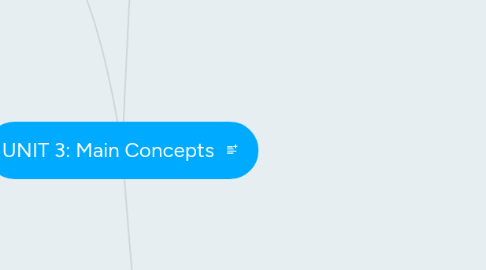
1. Funding of HE
1.1. Jongbloed, B. (2000) The funding of higher education in developing countries
2. Steering of HE
2.1. Altbach, Philipp: The Logic of Mass Higher Education, 1999
2.2. Gornitzka, Å. and P. Maassen (2000) Hybrid steering approaches with respect to European higher education
2.3. Meek, V. L. (2003) Introduction. In: A. Amaral et al. (eds.) The Higher Education Managerial Revolution?
2.4. Musselin, Christine (2005) Chapter 5: Change or Continuity in Higher Education Governance? Lessons Drawn from Twenty Years of National Reforms in European Countries
3. Organizational change in HE
3.1. Gornitzka, Å. (1999) Governmental policies and organisational change in higher education
3.1.1. Research question: How do HE organizations change in response to or in interaction with governmental policies and programmes?
3.1.1.1. Resource dependency
3.1.1.1.1. Organizations are flexible in relation to their environment
3.1.1.1.2. Able to make (strategic) organizational choice
3.1.1.1.3. Internal power distributions affect and are affected by external dependencies
3.1.1.2. Neo-institutional theory
3.1.1.2.1. Organizations operate within organizational fields: survival implies adaptation and CONFORMITY to organizational norms, beliefs, standards...
3.1.1.2.2. Organizations are legitimized by their organizational identity
3.1.1.2.3. Externally imposed change faces internal resistance unless it conforms to the organizational culture and identity
3.1.1.3. Integrated approach:
3.1.1.3.1. Structure and nature of HEIs and their internal processes are vital to understand how / why they change and how / why policies fail or succeed
3.1.1.4. What is a (government) policy? - A public statement of an objective and the kind of instruments that will be used to achieve it.
3.1.1.4.1. Policies are affected by the processes of implementation
3.1.1.4.2. Policy objectives
3.1.1.4.3. Policy problem
3.1.1.4.4. normative basis for the policy
3.1.1.4.5. policy instruments
3.1.1.4.6. linkage / consistency (with overall government agenda)
3.1.1.5. Relationship btw HE and government impacts change: state steering. Olsen's 4 models:
3.1.1.5.1. Sovereign state:
3.1.1.5.2. Institutional state:
3.1.1.5.3. Corporate - pluralist state:
3.1.1.5.4. Supermarket state:
3.2. Gumport, P. (2000) Academic restructuring: Organizational change and institutional imperatives
3.2.1. Shift of public HEIs from social institutions to industry
3.2.1.1. How?
3.2.1.1.1. rise of academic management
3.2.1.1.2. academic re-stratification
3.2.1.1.3. academic consumerism
3.2.1.2. Challenges / consequences
3.2.1.2.1. legitimizing challenges or public HEIs
4. Globalization and Internationalization
4.1. Scott, P. (1998) Massification, Internationalization and Globalization
4.1.1. Do massification and internationalization compete or complete eachother?
4.1.1.1. Wider AND deeper or Wider OR deeper?
4.1.1.2. Changes brought by massification
4.1.1.2.1. Relationship between HE and society
4.1.1.2.2. Shape and structure of HE
4.1.1.2.3. Expansion
4.1.1.2.4. Teaching and learning
4.1.1.3. International aspects of mass HE systems
4.1.1.3.1. Increase in international student numbers / flow
4.1.1.3.2. Staff mobility
4.1.1.3.3. Cooperation in teaching and research
4.1.1.3.4. Ideas, science and scholarship transcend borders
4.2. Huisman, J., Stensaker B. and B. Kehm (2009) Bologna, Quo vadis?
4.2.1. Impact of the Bologna process onto the following 4 areas:
4.2.1.1. Governance
4.2.1.1.1. obvious changes, not so obvious outcomes
4.2.1.1.2. what is a good governance model? why? in which context?
4.2.1.2. Quality
4.2.1.2.1. Gains more and more importance
4.2.1.2.2. Increasing number of agencies on national and supra-national level (ENQA (ESG) etc.
4.2.1.3. Mobility and HR
4.2.1.3.1. is everyone is doing it, it's no longer special
4.2.1.3.2. staff mobility not as prominent
4.2.1.4. Diversity
4.2.1.4.1. How to sustain diversity in a time of compatibility and convergence?
4.2.1.4.2. fragmentation?
4.3. Gornitzka, Å. (2008) The Internationalisation of Research and Higher Education
4.3.1. How are HE and research being internationalized?
4.3.1.1. Territorial (national) role of HE and research:
4.3.1.1.1. nation building
4.3.1.1.2. development
4.3.1.1.3. matching military needs...
4.3.1.2. International dimension of HE and research is a process of change, driven by the following 4 factors:
4.3.1.2.1. Technological change
4.3.1.2.2. Economic change
4.3.1.2.3. Political change
4.3.1.2.4. Cultural change
4.3.1.3. Categorization of internationalism:
4.3.1.3.1. forms of internationalism
4.3.1.3.2. levels of action
4.3.1.3.3. territorial constellations
4.4. Maassen, P. and Cloete, N. (2005) Global Reform Trends in Higher Education
4.4.1. The role and position of HE in light of internationalization and globalization: goes back to Gumport, Clark's entrepreneurial university...
4.4.1.1. Framework of analysis: triangle of relationships between state, HEIs and society and the influence of globalization upon it
4.4.1.1.1. Role of the state
4.4.1.1.2. Role of society
4.4.1.1.3. HEIs
4.4.1.1.4. Globalization:
